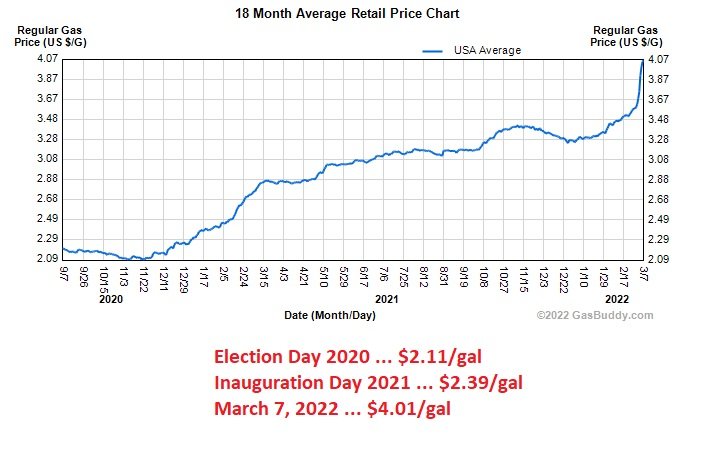The Truth Behind Military Brass Incompetence And The System That Perpetuates It
“I want to understand White rage. And I’m White.”
This is what keeps our nation’s top General up at night.
Don’t just take my word for it. See with your own eyes:
Before the invasion of Ukraine, the Chairman of the Joint Chiefs of Staff, General Mark Milley, reportedly told congressional leaders that Ukraine would “…fall in 72 hours.”
Whoops.
Once Putin wasn’t winning on the battlefield, the Pentagon acknowledged that this could be a long war.
The military acts in a reactive posture versus from a proactive position, and it’s high time we have serious conversations about it.
To be fair to General Milley, you can’t put all the blame for the repetitive incompetence displayed by The Pentagon on him. But, on the other hand, he just happens to be the senior-most ranking military member in our country. So I guess you could put all the blame on him.
Support Conservative Voices!
Sign up to receive the latest political news, insight, and commentary delivered directly to your inbox.
Perhaps if he spent more time studying the profession of arms versus delving into his white fragility, he could accurately predict the possible outcomes of Russia’s invasion.
Perhaps if he had spent more time listening to his generals in the field than playing politics, he could’ve appropriately advised on the outcome of our withdrawal from Afghanistan.
“There was nothing that I or anyone else saw that indicated a collapse of this army and this government in 11 days,” Milley said.
Our history has countless examples of how our military was made famous for learning from mistakes and doing better next time.
RELATED: Report: Milley Blamed Biden State Department For Afghanistan Withdrawal
Why Has Military Skill And Foresight Atrophied?
Politics and the military are not new bed fellows. From the very birth of our nation, men lobbied for high-ranking military positions to elevate their name and their influence. Likewise, we see this with top brass focused on their careers and wealth as they vie for a role on defense contractor boards.
The difference between then and now is the number of Americans who serve in the military. If you think about World War II-era military levels, roughly 11% of Americans served in the military.
Come 2018; that had dropped to about 7%. It doesn’t seem like a huge difference. Still, the difference seemed much more significant when you think of pure numbers, with 3.5 million on Active Duty in 1968 to 1.4 million in 2021.
Until recently, the American military was generally revered by all demographics and groups. The media, politicians, and any other influential group would expound limitless praise on the military most of the time. This is a bit at odds with the skepticism and criticism that most other tax-payer-funded institutions experience in this country.
If you had been in the service in the last 20 years, you more than likely sat through training that would discuss how the American people have unending and unwavering trust in men and women in uniform over almost all other professions.
However, last November, the Ronald Reagan Institute found in a poll that only 45% reported “A great deal of trust and confidence in the military,” down 25 points in just three years from other polls.
Chairman of the Joint Chiefs of Staff Gen. Mark Milley’s erroneous public predictions, and focus on integrating “woke” social policies into military training have caused overall military morale to drop to levels that some veterans say is an all-time low. https://t.co/6sv6aw0k9a pic.twitter.com/URbscU399D
— Newsmax (@newsmax) April 12, 2022
Why The Steady Decrease In Public Confidence?
The chaotic retreat from Kabul undoubtedly played a part in shaking this confidence. It was the first time since the fall of Saigon that the American people had witnessed a military defeat. But, regardless of how you felt about withdrawal, the execution is what upset so many on both sides of the political aisle.
When Congress and the media questioned, our military leaders tried to spin that there was much to celebrate. After all, our servicemen and women had executed a harrowing dynamic airlift and saved thousands of lives.
As if the images of Afghans falling from the wheels of our tankers, 13 service members who died in the process, and the innocent people we killed in an airstrike based on lousy intelligence are irrelevant based on our rapid global mobility skills.
This kind of factual misdirection is something that the defense machine is quite adept at, going back to our military academies. As a result, as much as it may be painful to admit, we are creating the ill-equipped, weak, and unqualified military leaders we rely on today.
BREAKING: Rep. Matt Gaetz SLAMS Woke Generals Mark Milley, Lloyd Austin, and Kenneth McKenzie for Their Total Failure as the Leaders of the Armed Forces
“If we didn’t have a president that was so addled, you all would be fired. Because that is what you deserve.” pic.twitter.com/09CSv3k5Rv
— Rep. Matt Gaetz (@RepMattGaetz) September 29, 2021
RELATED: Biden Rejects Army Report Warning Of Afghanistan Debacle: ‘That’s Not What I Was Told’
The Academy Con
It’s commonly believed that gaining acceptance into any military academy is something only the most premier students can attain. This simply is not the case. The Naval Academy once claimed they had over 20,000 applicants in one year when the number was closer to 5,000.
Universities have to report their applicant and admission numbers using strict guidelines produced by the Department of Education. The military academies are allowed to create their policies for the most part. They count applicants as anyone who has shown any interest in the academies, regardless of whether they ever submit a finished application.
Coupled with that, on average, United States Representatives and Senators received roughly $171,000 in contributions from families of students they nominated to the academies. It’s easy to see how we flood these academies with the average and dull versus the best and brightest.
Each academy has preparatory schools meant to, on the surface, provide a leg up for those who come from challenging socioeconomic backgrounds in an attempt to give a veneer of diversity. In reality, a lot of the students in the preparatory schools are there to fill the sports programs of the academies to help elevate those programs that are also recruitment mechanisms across the country.
For every student who makes it to the preparatory school, another academically more qualified student for the academy loses their slot. The military academy’s fabrications have instilled in Americans overconfidence in the military and reduced overall military preparedness.
In one of his first meetings with the Joint Chiefs of Staff, President Trump once reportedly said, “You don’t know how to win anymore.”
He may not have been wrong.






